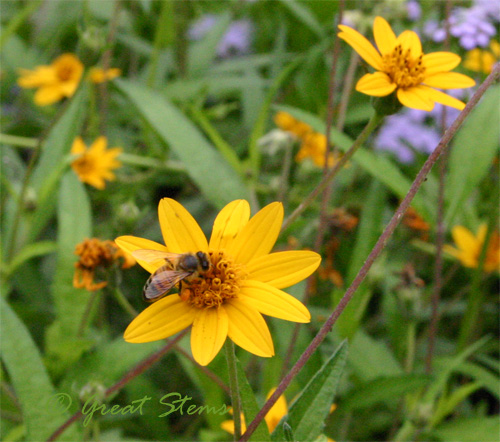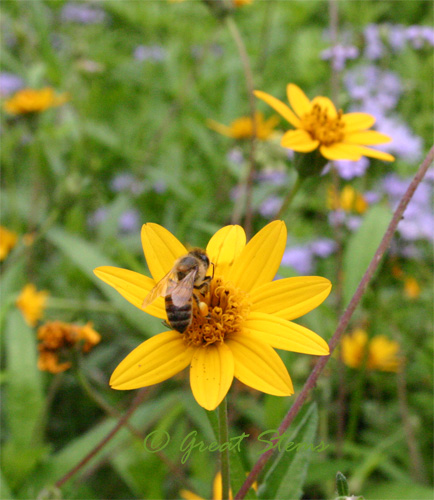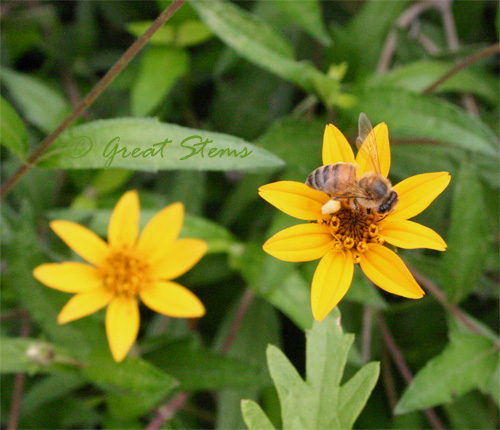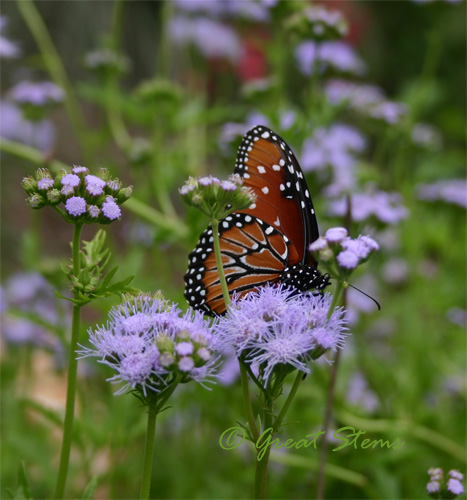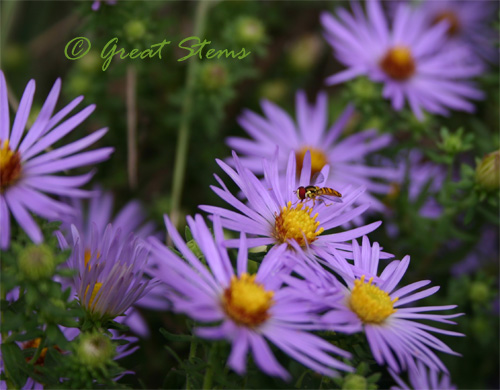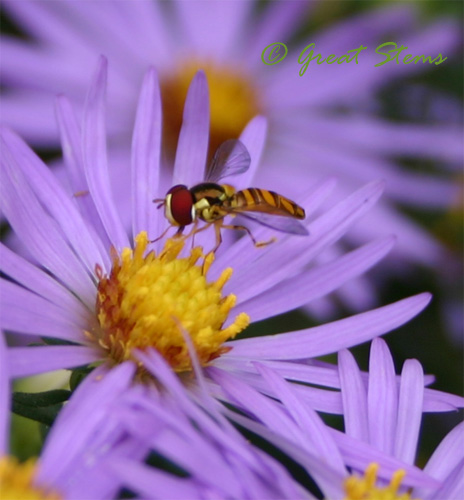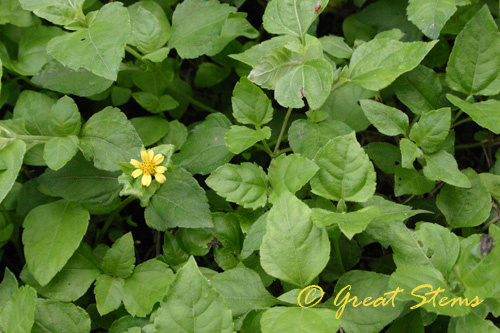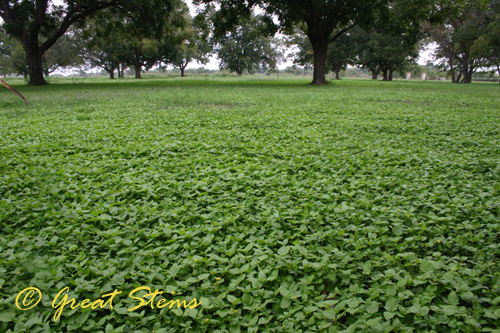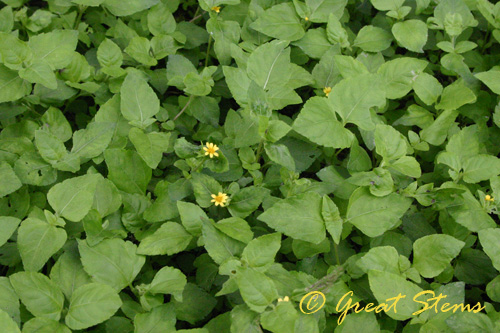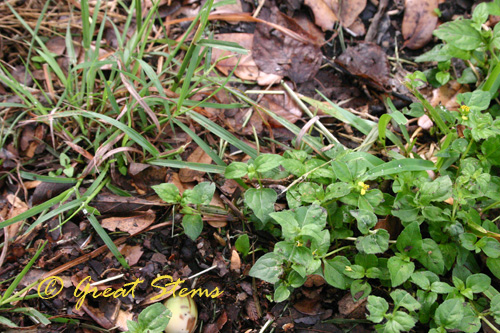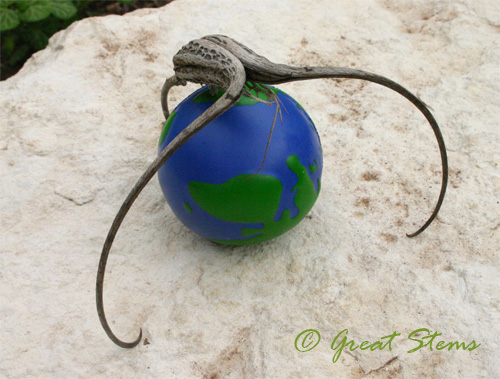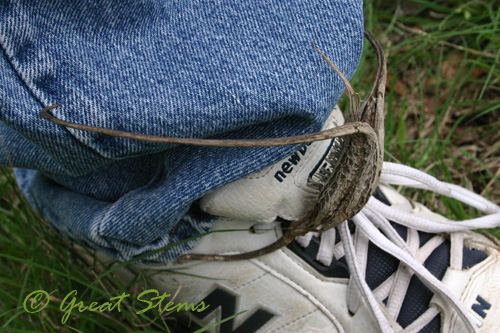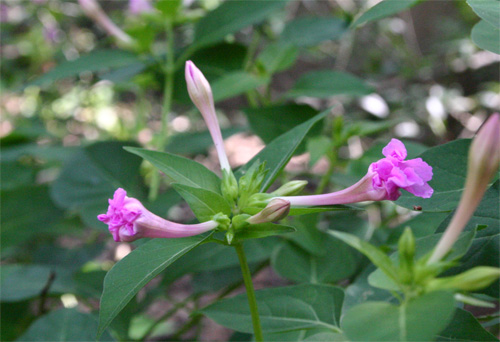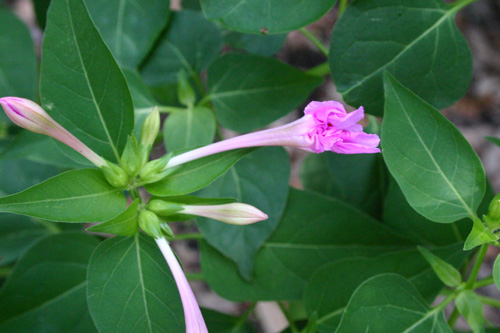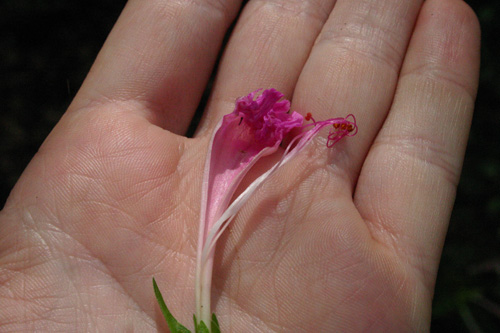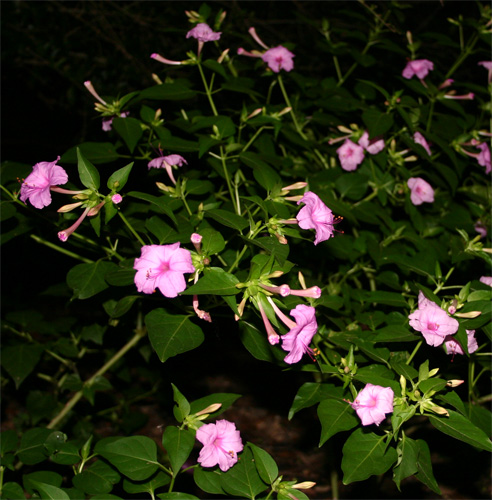As a special treat on Halloween, other recent Habitat Steward graduates and I had the honor of visiting the award-winning and very beautiful wildlife habitat of Dale and Pat Bulla here in Austin.
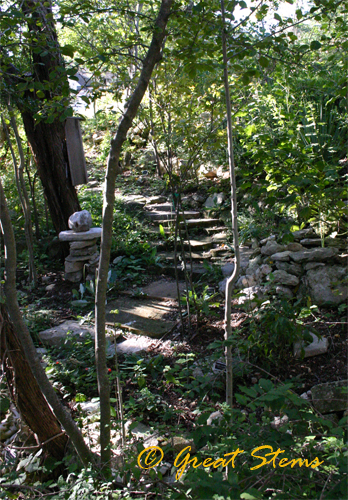 I had heard a lot about their spectacular wildscape, so when our Habitat Steward group was given the opportunity to have a tour, you know I jumped at the chance!
I had heard a lot about their spectacular wildscape, so when our Habitat Steward group was given the opportunity to have a tour, you know I jumped at the chance!
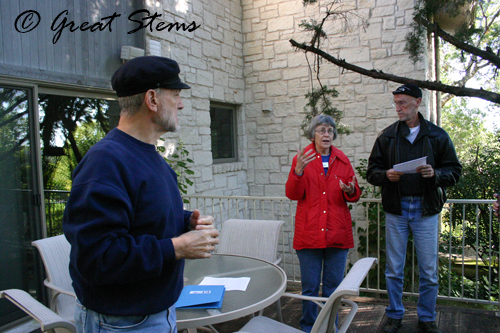 Dale (left) and Pat (center) are also both Habitat Stewards with NWF, and preserving native Texas plant life is exceptionally important to them. They are leaders in conservation efforts in Austin and Texas, and they were a primary force in helping their neighborhood win Austin’s Community Wildlife Habitat challenge in 2008 with the highest number of certified wildlife habitats.
Dale (left) and Pat (center) are also both Habitat Stewards with NWF, and preserving native Texas plant life is exceptionally important to them. They are leaders in conservation efforts in Austin and Texas, and they were a primary force in helping their neighborhood win Austin’s Community Wildlife Habitat challenge in 2008 with the highest number of certified wildlife habitats.
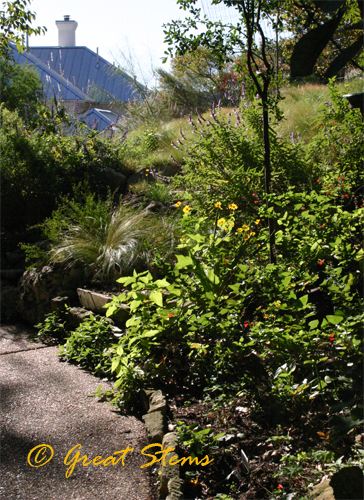 Pat and Dale have lived on their property since 1998, building their home on a rocky limestone slope overlooking the Balcones Canyonland Preserves. Their efforts to create a natural landscape since then have paid off — paths of natural materials such as mulch, rock, and cedar lead visitors through peaceful woods and past pocket seeps.
Pat and Dale have lived on their property since 1998, building their home on a rocky limestone slope overlooking the Balcones Canyonland Preserves. Their efforts to create a natural landscape since then have paid off — paths of natural materials such as mulch, rock, and cedar lead visitors through peaceful woods and past pocket seeps.
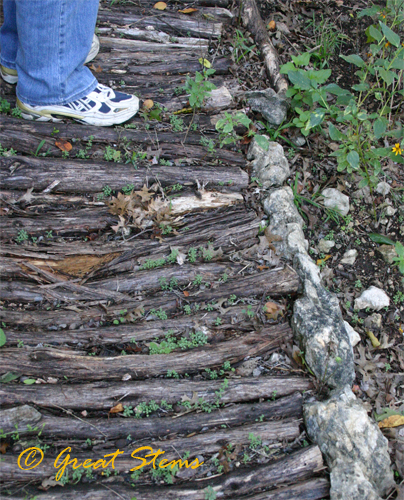 Many of the plants were placed there by the Bullas, but many more were delivered by birds and other creatures. The result is a wonderland of native Texas species.
Many of the plants were placed there by the Bullas, but many more were delivered by birds and other creatures. The result is a wonderland of native Texas species.
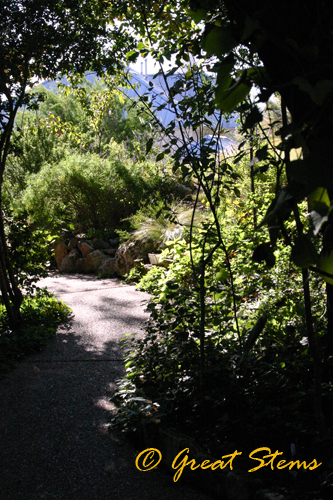
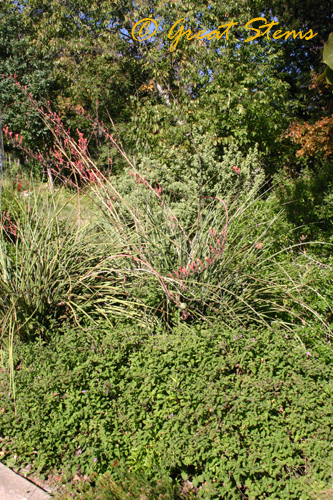
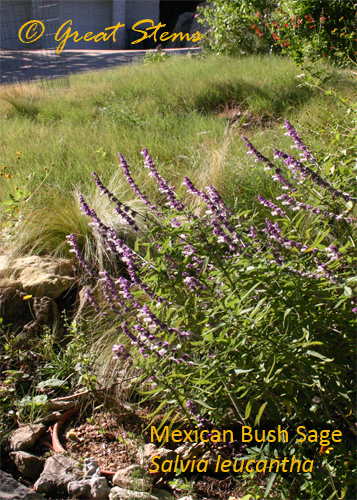
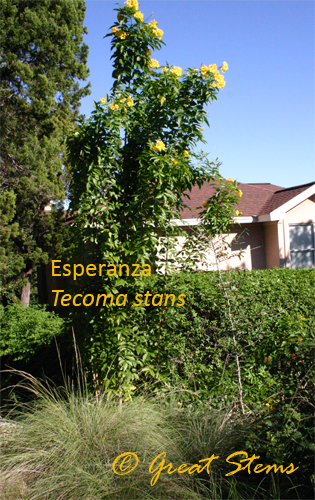 Pat told me that the plants on their property are about 95% native, with the remaining being well adapted plants such as rosemary and winter-blooming germander.
Pat told me that the plants on their property are about 95% native, with the remaining being well adapted plants such as rosemary and winter-blooming germander.
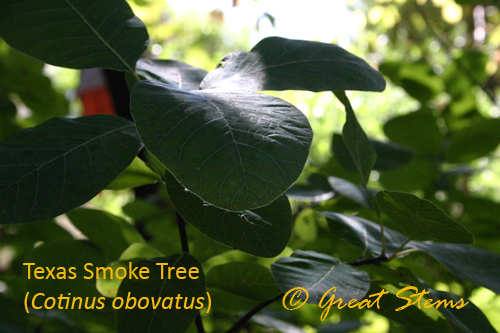
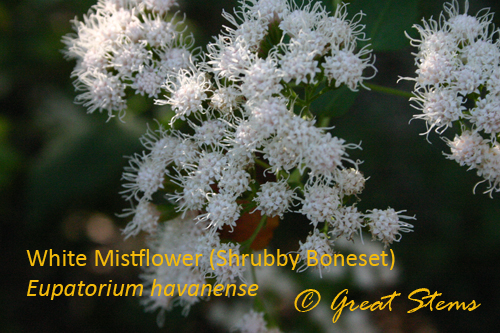
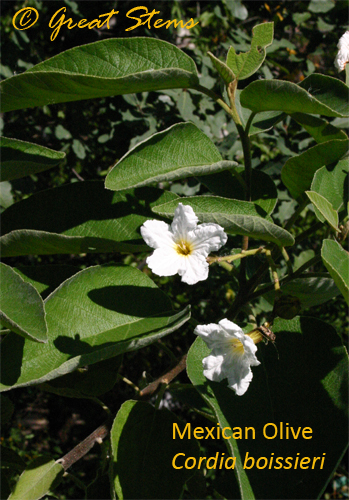
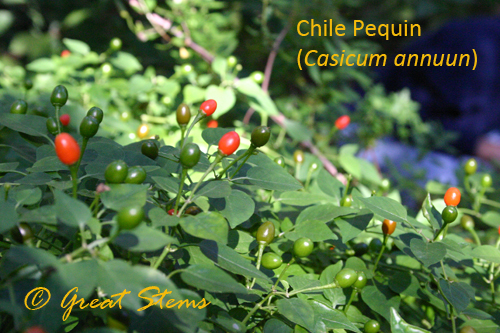
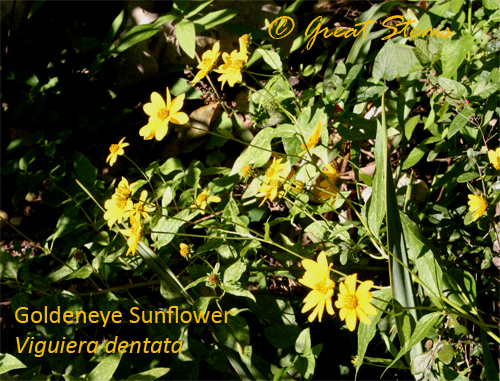
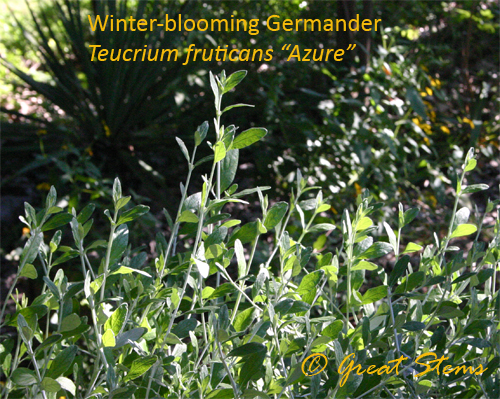
It being the end of October, we were able to see many species just beginning their fall fruit or fall color stages.
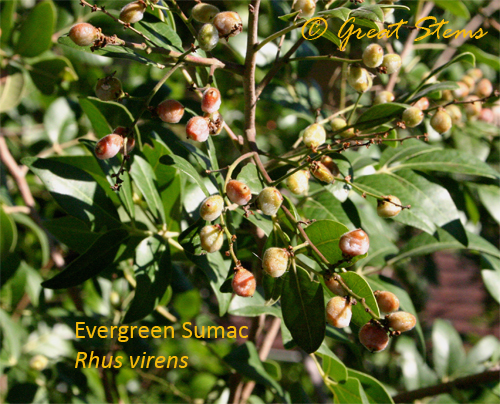
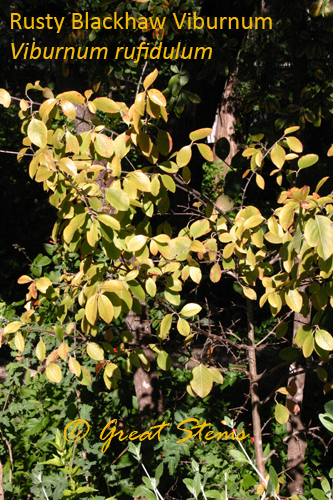
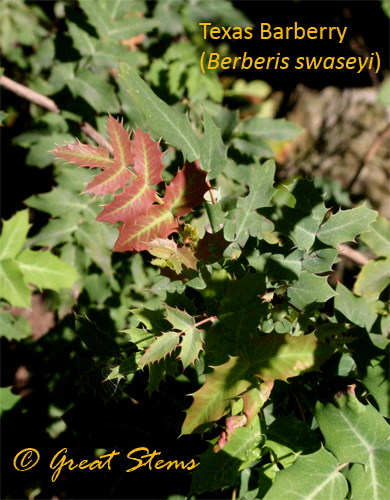
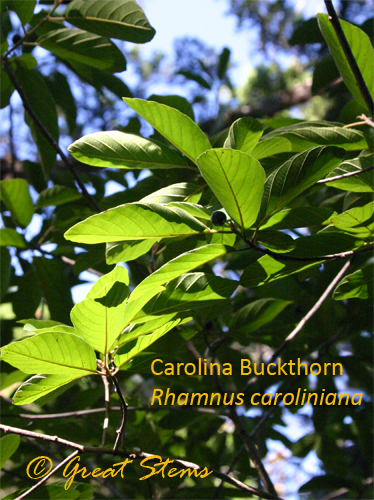
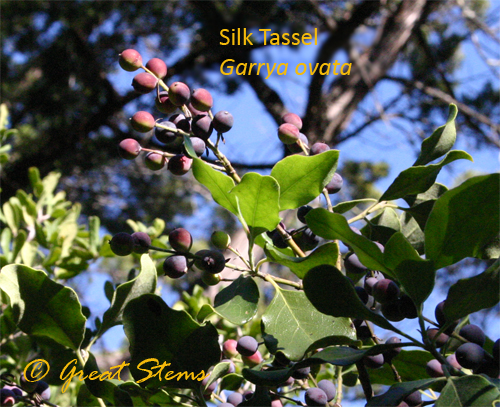 As we toured the Bulla wildscape, Dale and Pat identified many of their favorite trees, shrubs, and perennials, sometimes sharing stories about certain plants. We tasted the leaves of a Toothache Tree (Zanthoxylum hirsutum), and after a couple of minutes I felt my gums tingle, as if they were going numb. I want one of these trees for the pure fun of it.
As we toured the Bulla wildscape, Dale and Pat identified many of their favorite trees, shrubs, and perennials, sometimes sharing stories about certain plants. We tasted the leaves of a Toothache Tree (Zanthoxylum hirsutum), and after a couple of minutes I felt my gums tingle, as if they were going numb. I want one of these trees for the pure fun of it.
The Bullas are fortunate to have many rare or unusual plants, such as the Lindheimer’s Crown-Beard (Verbesina lindheimeri), a plant so rare and special that the Wildflower Center collected seeds from the Bulla plants and sent them to the Millennium Seed Bank in London. Other plants, not necessarily considered rare, can still quite difficult to find in nurseries.
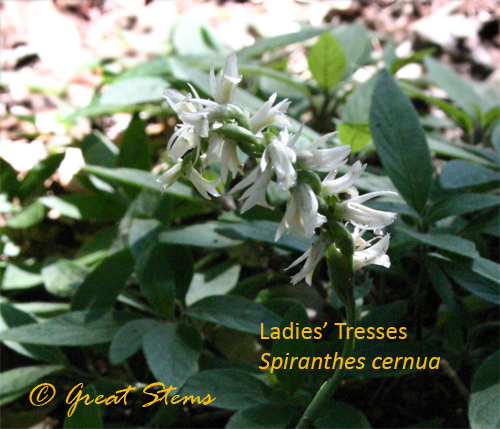
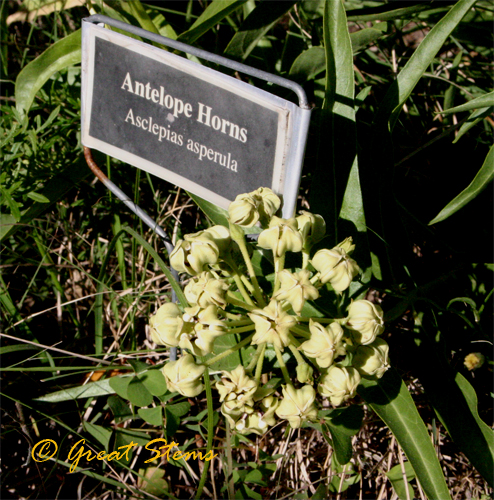
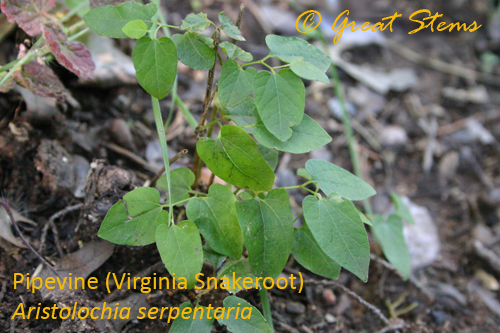
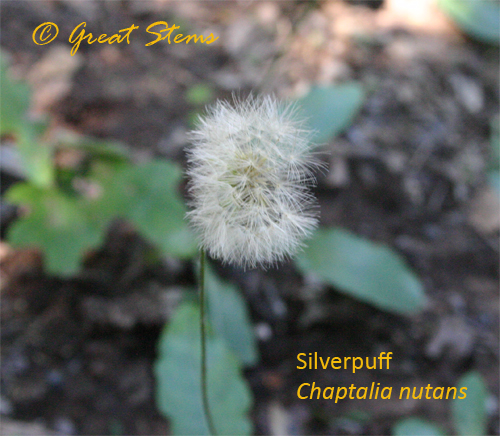
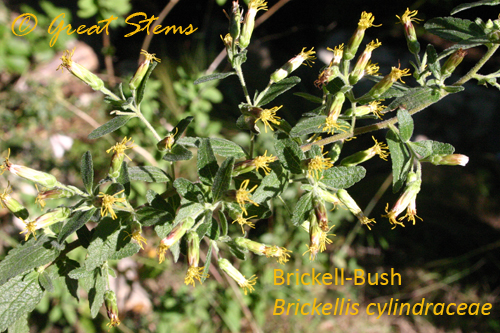 The Bullas study the soil, light, and water conditions of their property in order to best place plants. With a combination of rocky slopes, natural seeps, sun, shade, woods, and open areas all on their property, it seemed to me that they had an advantage in being able to plant a little bit of everything!
The Bullas study the soil, light, and water conditions of their property in order to best place plants. With a combination of rocky slopes, natural seeps, sun, shade, woods, and open areas all on their property, it seemed to me that they had an advantage in being able to plant a little bit of everything!
Bluebonnet seedlings, Tropical Sage, Little Bluestem, and other plants were interspersed in the Buffalo grass of the Bullas’ front yard mini-prairie.
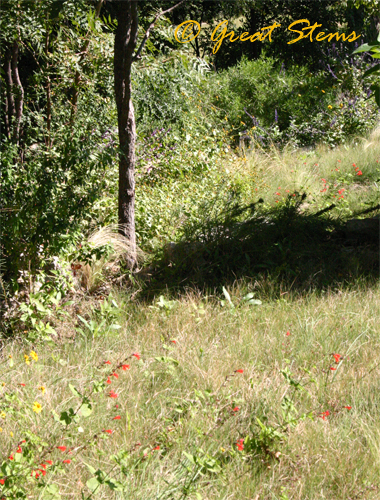
Amazingly, the habitat is home to six different kinds of native Texas passionflower vines.
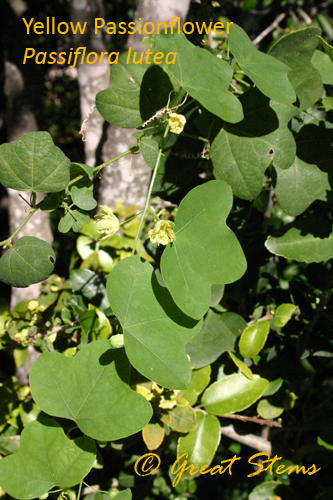
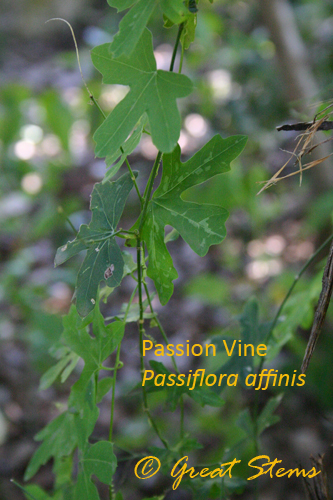
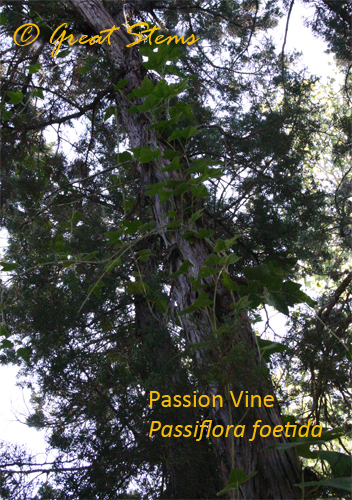
The Bullas have a knack for creating functional habitat features that blend in with the natural setting, including a manmade seep-like water source, beebox (with nesting holes for solitary bees), and rock man.
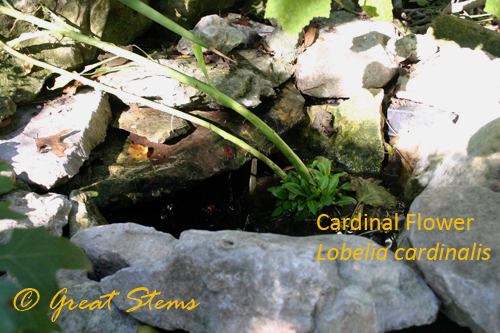
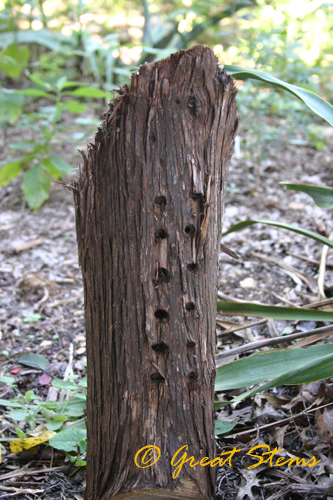
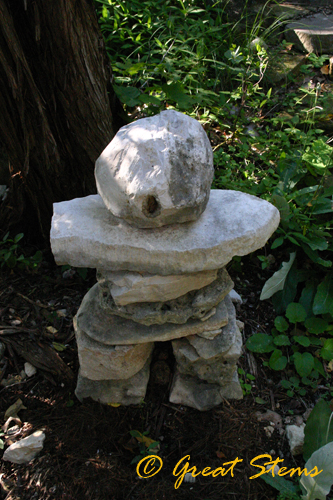
Dale and Pat’s home serves as an example to others about how to minimize their carbon footprint. Not only is their carbon footprint exceptionally low due to natural paths, water collection systems, zero lawn, and minimal water usage, the Bullas also use solar panels that produce enough electricity to actually return some back to the city.
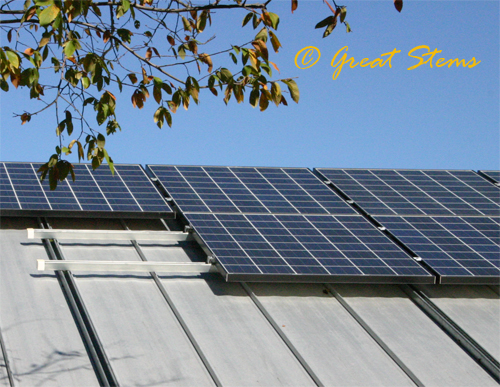 And of course, the wildlife love the Bullas’ habitat, too. Unfortunately for the Bullas, however, this includes destructive feral hogs that visit the property from the BCP during the night, occasionally tearing up pathways and plants while looking for grubs, roots, and tasty vegetation. Deer prevent Dale and Pat from planting certain delectable species and veggies, too. But birds, butterflies, lizards, and other creatures call the Bullas’ habitat home. We enjoyed watching the Queens and Monarchs fluttering about, but I was truly mesmerized by this Buckeye. I have yet to see a Buckeye in my yard!
And of course, the wildlife love the Bullas’ habitat, too. Unfortunately for the Bullas, however, this includes destructive feral hogs that visit the property from the BCP during the night, occasionally tearing up pathways and plants while looking for grubs, roots, and tasty vegetation. Deer prevent Dale and Pat from planting certain delectable species and veggies, too. But birds, butterflies, lizards, and other creatures call the Bullas’ habitat home. We enjoyed watching the Queens and Monarchs fluttering about, but I was truly mesmerized by this Buckeye. I have yet to see a Buckeye in my yard!
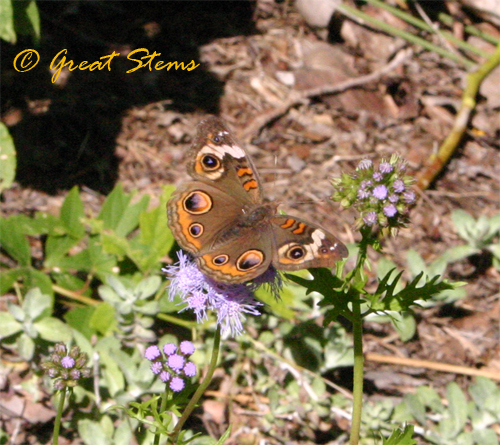 It’s no wonder the Bullas’ habitat is designated as a Green Garden by the City of Austin. An award well deserved!
It’s no wonder the Bullas’ habitat is designated as a Green Garden by the City of Austin. An award well deserved!
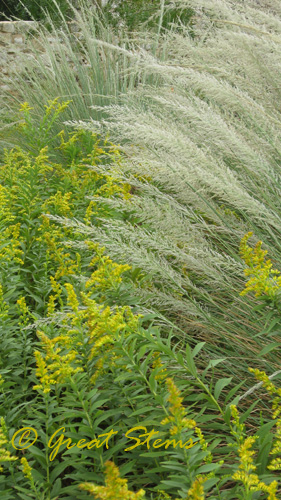
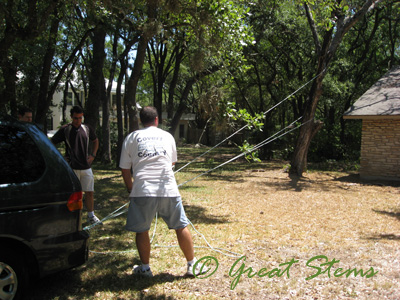
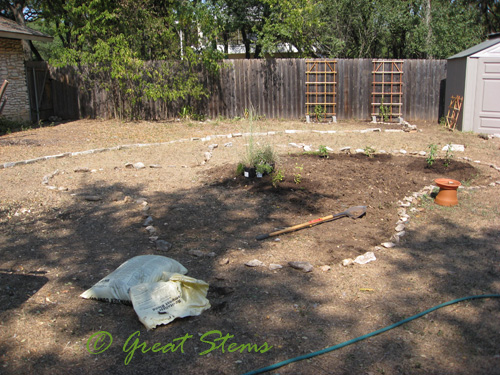
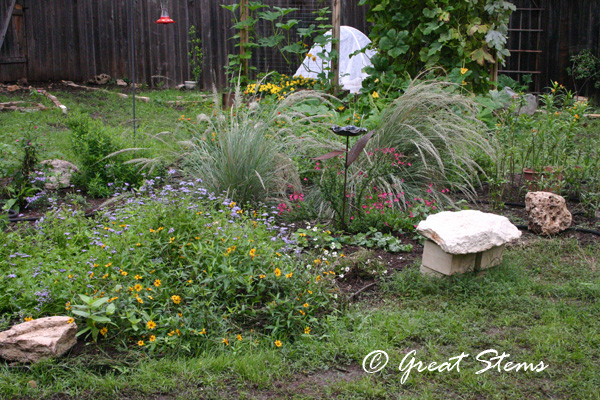
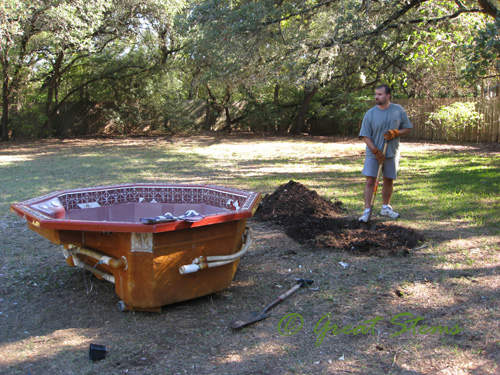
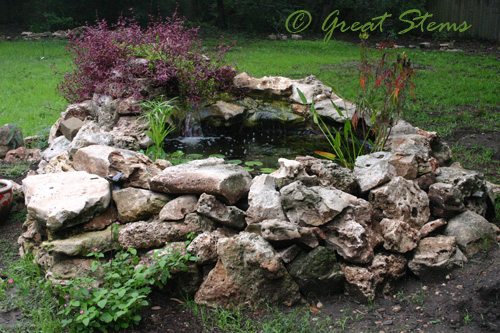
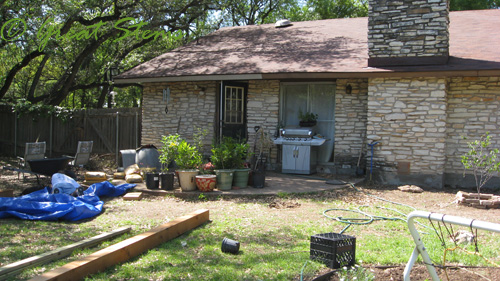
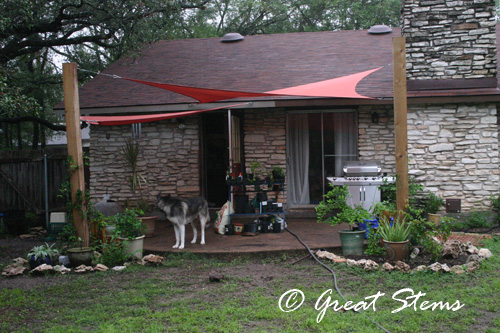
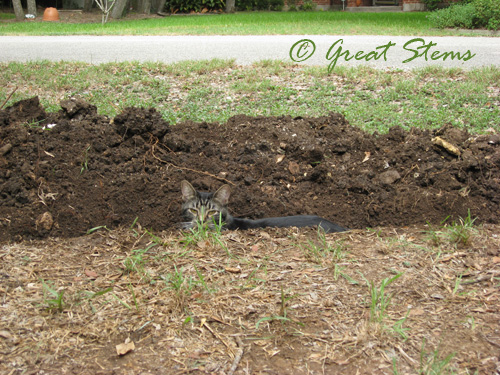
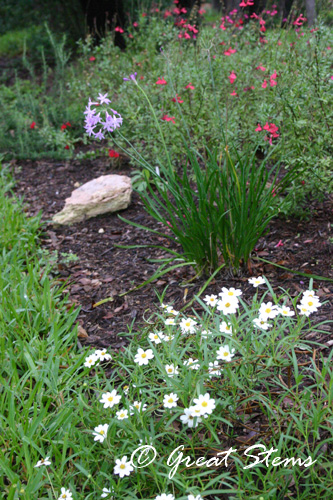 There’s a lot more to our yard than what you see here, and I invite you to
There’s a lot more to our yard than what you see here, and I invite you to 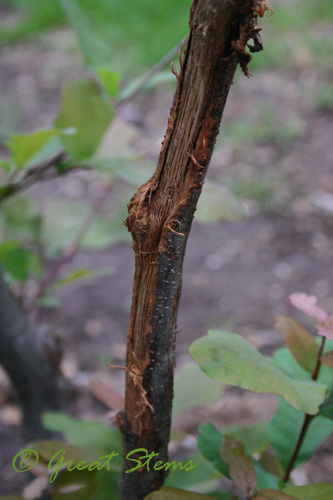
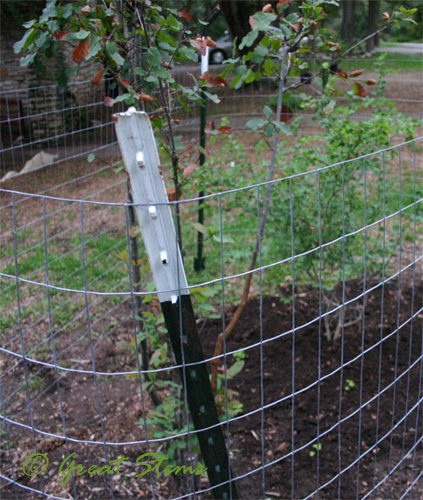
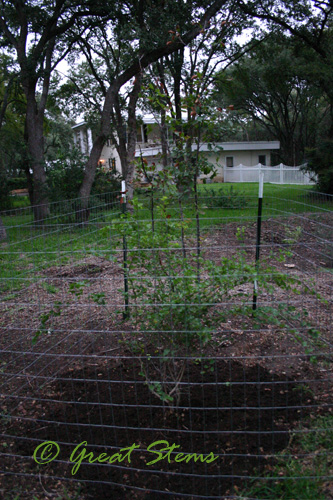 Now for some good news — the disappearing fountain is back and functioning again! We never did solve the mystery of the shifted rock, which led to the unexpected emptying of our new disappearing fountain and potential pump damage. But happily the pump still functions, and our fountain still remains the $40 disappearing fountain! We changed up the rock structure, so hopefully it will be harder for some creature to displace the tube. That little rock is only there for interest, not for directing the water flow.
Now for some good news — the disappearing fountain is back and functioning again! We never did solve the mystery of the shifted rock, which led to the unexpected emptying of our new disappearing fountain and potential pump damage. But happily the pump still functions, and our fountain still remains the $40 disappearing fountain! We changed up the rock structure, so hopefully it will be harder for some creature to displace the tube. That little rock is only there for interest, not for directing the water flow.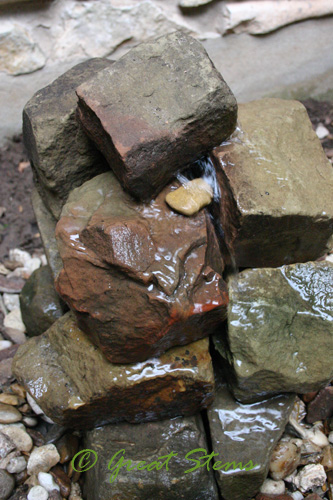
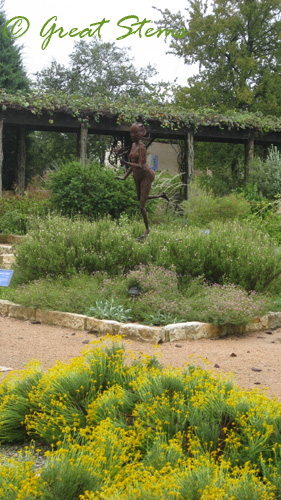 Spectacular combinations of colors and textures bring unconscious serenity to the viewer. Here the majestic Goldenrod really stands out against the wispy seeds and grasses of Big Muhly.
Spectacular combinations of colors and textures bring unconscious serenity to the viewer. Here the majestic Goldenrod really stands out against the wispy seeds and grasses of Big Muhly.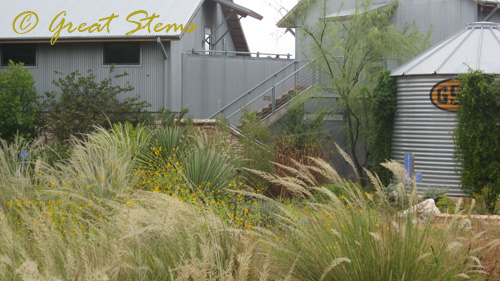 It was my husband’s first time to the Wildflower Center, so we did a quick little walkaround, but there wasn’t much time to take a thorough tour. There is so much more the center offers, from truly impressive rain collection systems to walking trails to green roof research to continuing education courses, and more.
It was my husband’s first time to the Wildflower Center, so we did a quick little walkaround, but there wasn’t much time to take a thorough tour. There is so much more the center offers, from truly impressive rain collection systems to walking trails to green roof research to continuing education courses, and more.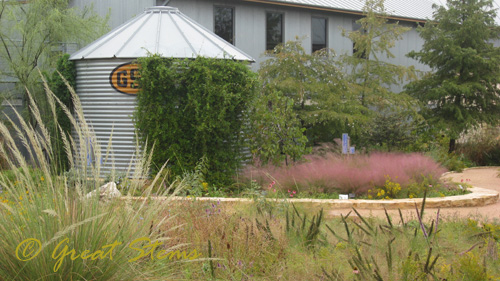 But twice a year, Texan gardeners get very excited about a special event that takes place at the Wildflower Center. The center hosts an outstanding
But twice a year, Texan gardeners get very excited about a special event that takes place at the Wildflower Center. The center hosts an outstanding 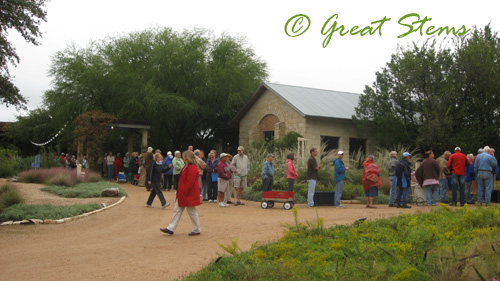
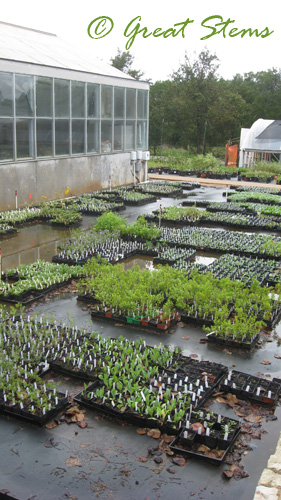 Up near the front of the line, my husband and I chatted with our friendly line neighbors.
Up near the front of the line, my husband and I chatted with our friendly line neighbors. Of course, when the ribbon was cut and the sale actually opened, we all said something along the lines of “It was so very nice talking to you! Now stay away from my plants!” (And at this point I stopped taking pictures, because the mad rush to find all coveted plants began. In fact, if you couldn’t tell from the images — these are from my pocket camera instead of my regular camera. I had to make sure I wasn’t overburdened when plants were at stake! Yes, at first it can seem like a frenzy, particularly for the rarer species. I didn’t start taking pictures again until all our plants were chosen, and by then many buyers had already cleared out, so this crowd looks small compared to the earlier blockade of people all trying to get their carts through the aisles while collecting as many plants on their list that they could).
Of course, when the ribbon was cut and the sale actually opened, we all said something along the lines of “It was so very nice talking to you! Now stay away from my plants!” (And at this point I stopped taking pictures, because the mad rush to find all coveted plants began. In fact, if you couldn’t tell from the images — these are from my pocket camera instead of my regular camera. I had to make sure I wasn’t overburdened when plants were at stake! Yes, at first it can seem like a frenzy, particularly for the rarer species. I didn’t start taking pictures again until all our plants were chosen, and by then many buyers had already cleared out, so this crowd looks small compared to the earlier blockade of people all trying to get their carts through the aisles while collecting as many plants on their list that they could).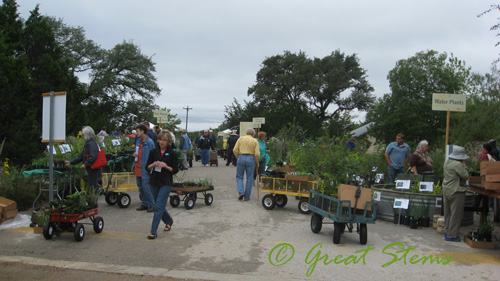
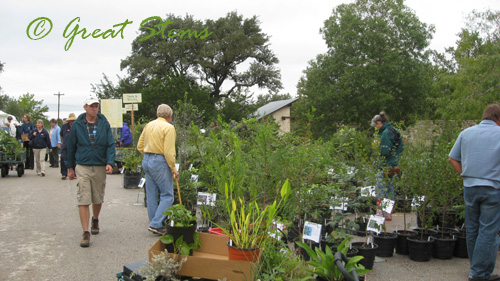
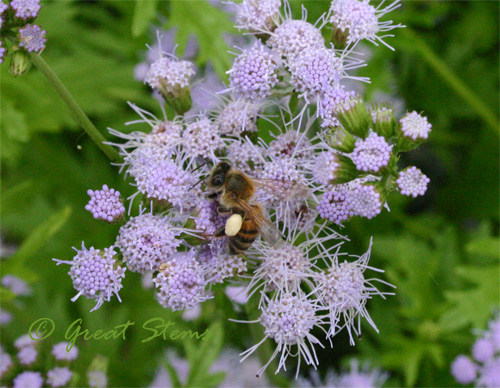
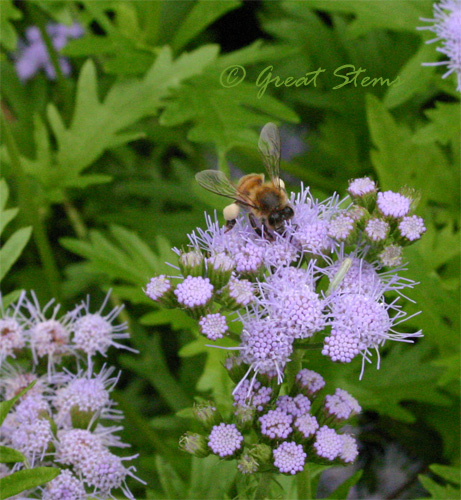
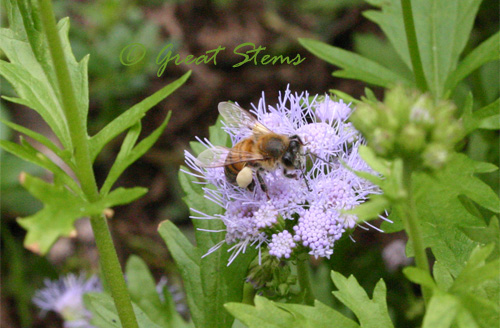 In the same patch of flowers, the honeybees on the Zexmenia had bright orange pollen baskets on their little legs.
In the same patch of flowers, the honeybees on the Zexmenia had bright orange pollen baskets on their little legs.